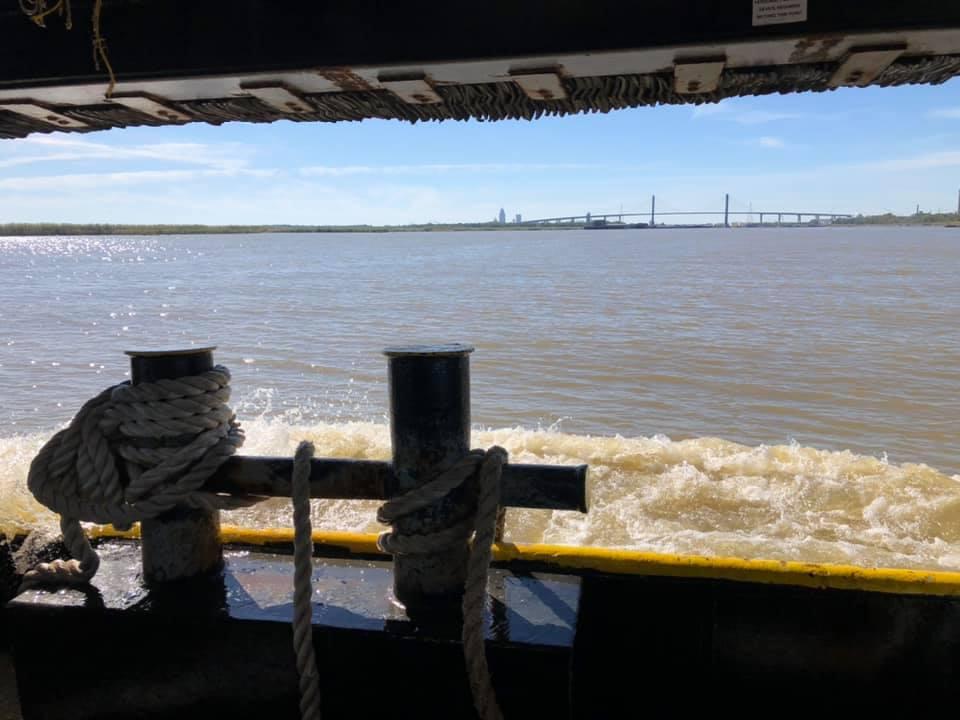Automating Workboats: The TBS Safety And Nebofleet Collaboration

Table of Contents
Enhanced Safety Through Automation
Human error remains a leading cause of accidents in the maritime sector. Automating workboats significantly mitigates this risk, leading to a safer working environment for crews and a reduced risk of environmental damage.
Reducing Human Error
Automation minimizes the potential for human error through several key functionalities:
- Automated collision avoidance systems: These systems utilize advanced sensors and AI to detect potential collisions and automatically adjust the vessel's course, preventing accidents. This is especially critical in busy waterways or low-visibility conditions. Advanced features like AIS integration further enhance collision avoidance capabilities.
- Remote monitoring and control of critical systems: Operators can monitor and control essential systems remotely, allowing for proactive identification and resolution of potential issues before they escalate into emergencies. This includes engine diagnostics, fuel levels, and other vital parameters.
- Real-time alerts and notifications for potential hazards: The system provides immediate alerts for potential hazards such as approaching storms, ice formations, or navigational warnings. This allows crews to take timely preventative measures.
- Improved situational awareness through integrated sensor data: By integrating data from various sensors, including GPS, radar, and sonar, the system provides a comprehensive picture of the vessel's surroundings, enhancing situational awareness and decision-making. This can include weather forecasts, water depth information, and more.
Improved Emergency Response
Automated systems significantly enhance emergency response capabilities:
- Automated distress signals: In case of an emergency, the system automatically transmits distress signals to relevant authorities, ensuring rapid response. This can include GPS coordinates, vessel details, and other vital information.
- Rapid deployment of safety equipment: Automation can facilitate the rapid and efficient deployment of life rafts, life jackets, and other safety equipment, maximizing the chances of crew survival.
- Optimized evacuation procedures: Automated systems can assist in optimizing evacuation procedures, ensuring crew members are safely and efficiently evacuated in case of an emergency. This may involve directing crew to the appropriate escape routes and providing real-time guidance.
- Enhanced communication during emergencies: The system facilitates clear and efficient communication between the crew, shore-based personnel, and emergency responders. This can include improved voice communication, data transfer, and other important functionalities.
Optimizing Workboat Efficiency with Nebofleet's Technology
Nebofleet’s technology plays a crucial role in optimizing the efficiency of automating workboats, resulting in significant cost savings and improved productivity.
Streamlined Operations
Automation contributes to smoother and more efficient workflows:
- Automated route planning and navigation: The system optimizes routes based on factors like weather conditions, traffic patterns, and fuel efficiency, minimizing travel time and fuel consumption. This also ensures that the vessel remains within its designated operating area.
- Optimized fuel consumption through predictive analytics: By analyzing historical data and predicting future needs, the system optimizes fuel consumption, leading to substantial cost savings. Predictive analytics can help prevent fuel waste and enhance profitability.
- Reduced downtime through preventative maintenance scheduling: The system predicts potential maintenance needs based on data analysis, allowing for proactive maintenance scheduling and reducing costly downtime. This improves the operational availability of the workboat.
- Improved crew resource management: Automation frees up crew time, allowing them to focus on other critical tasks, improving overall productivity and reducing workload.
Data-Driven Insights
Nebofleet provides valuable data for informed decision-making:
- Real-time vessel tracking and monitoring: Operators can track the vessel's location, speed, and other critical parameters in real-time. This improves situational awareness and enables remote management.
- Performance analysis and reporting: The system provides detailed performance reports, allowing operators to identify areas for improvement and optimize operational efficiency. Regular reporting enables continuous improvement and optimization.
- Predictive maintenance based on data analysis: Predictive maintenance scheduling minimizes downtime and extends the lifespan of equipment. This proactive approach prevents costly repairs and equipment failures.
- Identification of operational inefficiencies: The system helps identify and address operational inefficiencies, leading to cost savings and improved productivity.
The TBS Safety and Nebofleet Synergy
The collaboration between TBS Safety and Nebofleet creates a powerful synergy, providing a comprehensive solution for automating workboats.
Integrated Safety and Operational Solutions
The combined solution offers a seamless integration of safety and operational data:
- Seamless integration of safety and operational data: The platforms integrate seamlessly, providing a unified view of safety and operational data. This comprehensive view aids in more informed decision-making.
- Unified platform for monitoring and control: This integrated platform simplifies monitoring and control, enhancing efficiency and reducing complexity. This holistic approach streamlines operations and reduces the complexity for users.
- Enhanced situational awareness for improved decision-making: The integrated system improves situational awareness, enabling better decision-making in various scenarios. Access to combined data enhances situational understanding.
- A holistic approach to safety and efficiency: The combined solution adopts a holistic approach to enhance both safety and efficiency, optimizing workboat operations.
Case Studies and Real-World Examples
While specific details require client confidentiality, the TBS Safety and Nebofleet partnership has demonstrably improved safety records and operational efficiency for various workboat operators. We have seen significant reductions in fuel costs and improved overall performance. Further case studies will be shared as appropriate.
Conclusion
Automating workboats, through the innovative collaboration between TBS Safety and Nebofleet, is no longer a futuristic concept but a tangible reality offering significant benefits. By combining advanced safety features with efficient operational management, this partnership is transforming the maritime industry. The resulting increase in safety, efficiency, and data-driven decision-making creates a more sustainable and profitable future for workboat operators. Explore the possibilities of automating your workboats and contact TBS Safety and Nebofleet today to learn more about how you can implement these cutting-edge solutions. Take the first step towards a safer and more efficient future with automating workboats and experience the benefits firsthand.

Featured Posts
-
 Waarom Geeft Nrc Zijn Abonnees Gratis Toegang Tot The New York Times
May 02, 2025
Waarom Geeft Nrc Zijn Abonnees Gratis Toegang Tot The New York Times
May 02, 2025 -
 Tulsas Winter Road Maintenance A Fleet Of 66 Salt Trucks
May 02, 2025
Tulsas Winter Road Maintenance A Fleet Of 66 Salt Trucks
May 02, 2025 -
 Understanding Maines Inaugural Post Election Audit
May 02, 2025
Understanding Maines Inaugural Post Election Audit
May 02, 2025 -
 Massale Stroomuitval Breda 30 000 Mensen Zonder Elektriciteit
May 02, 2025
Massale Stroomuitval Breda 30 000 Mensen Zonder Elektriciteit
May 02, 2025 -
 Christina Aguilera Is This Photoshopping Gone Too Far Fan Reactions To Recent Pictures
May 02, 2025
Christina Aguilera Is This Photoshopping Gone Too Far Fan Reactions To Recent Pictures
May 02, 2025
